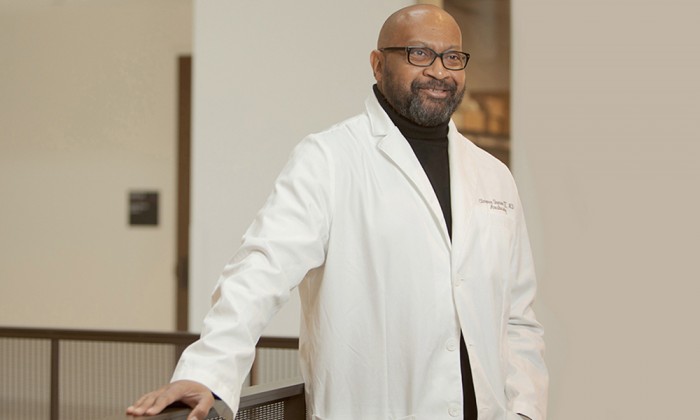
Clarence Shannon, MD, a University of Minnesota Physicians (M Physicians) anesthesiologist, has dedicated his life to finding safe and effective ways to manage pain. His interest in pain management was sparked thanks to mentors during his first year of medical school.
Shannon now focuses his work on non-opioid treatments through alternative medications, interventional procedures and/or pain-control devices that enable full engagement in exercise and neurobehavioral counseling. He partners with experts from varied medical disciplines to negate pain without the high risk and limited long-term benefits often associated with opioid medications.
Shannon recognized that it’s not always possible to completely eradicate a patient’s pain, but sometimes that isn’t the only goal.
“I want people to be able to reach their full potential. I want people to be able to realize what their purpose is and be able to care about that in a pain free life, in a pain free way. My ultimate goal is to help people with pain keep doing the things they love."
Clarence Shannon, MD
Two particular techniques, a nerve-block catheter and radiofrequency energy, are frequently utilized by Shannon. He explained the first: “Let’s say you undergo surgery on your arm. I can use a targeted local anesthetic to block the pain signals from the nerves in that arm. The anesthetic is delivered to those nerves via a catheter and a pump to keep you comfortable while you’re recovering.” The human body doesn’t become dependent on anesthetics like opioids, thus reducing the risk of future substance abuse by patients.
Radiofrequency energy is also a useful tool, especially for patients with arthritis. Shannon detailed: “Simply stated, radiofrequency energy is heat. We use it to reduce arthritic pain. Using X-ray imaging to guide them, specialists insert a small needle near the nerves responsible for arthritis pain. The needle delivers heat to that nerve and puts it out of commission for six to 18 months.”
Shannon sees patients who have both acute and chronic pain at the Comprehensive Pain Clinic in the University of Minnesota Health Clinics and Surgery Center. Patients with chronic pain are defined as those who have had some type of painful condition for over six months; acute pain is someone who experiences pain following a surgical procedure.
M Physicians doctors coordinate care to develop the best and safest possible plan for managing every individual’s pain. Helping every patient overcome their personal obstacles and getting them back to doing the things they love is important to Shannon, and it’s a driving factor in why he works in pain management.
To inquire about services, visit the Comprehensive Pain Clinic at the Clinics and Surgery Center, Floor 5, 909 Fulton St. SE. Minneapolis, MN 55455, or call 612‑301‑1425 for appointments.